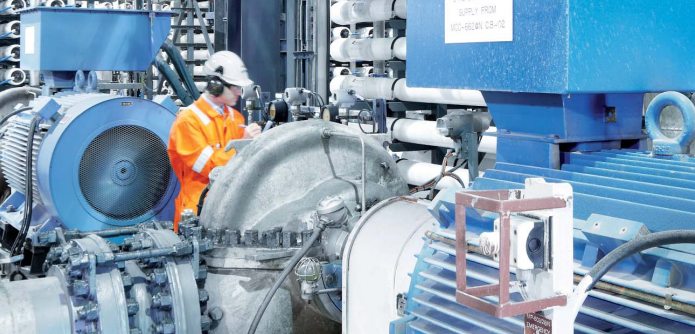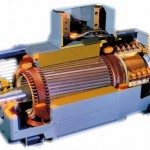Pump VFD
The BEP (Best Efficiency Point) of a centrifugal pump is dened as the operating point of highest efficiency, but also the point where velocity, and therefore pressure, is equal around the impeller and volute. The corresponding BEP for variable speed follows the Affinity laws.
Centrifugal pumps should be selected and normally operated at or near the manufacturers design specific speed for the rated conditions of head and flow best efficiency point.In a xed speed pumping application, BEP is xed. When ow modulation is required, throttling or bypassing is used. This is not the most efcient way to operate, both in energy use and mechanical stress (reliability) of the pump vfd system.
When fixed speed pumping motors are operated at reduced capacity, ie, at a flow significantly less than BEP and at a higher head, the fixed vane angles will cause eddy flowswithin the impeller, casing, and between the wear rings. The radial thrust on the rotor will increase, causing higher shaft stresses, increased shaft deflection, and potential bearing and mechanical seal problems while radial vibration and shaft axial movement will also increase. Any pump operated at excess capacity, ie, at a flow significantly greater than BEP and at a lower head, will surge and vibrate, creating potential bearing and shaft seal problems as well as requiring excessive power. Additionally, it may also infringe net positive suction head (NPSH) leading to cavitation and erosion of the impeller.
Many pump vfd systems require variable ow to meet changing process demands. The most common methods for controlling a variable ow system is a control valve, bypass line or a variable speed drive. Valve control Controlling the pump with a valve forces the pump back on the curve away from the pumps BEP, resulting in wasted energy across the valve and at the pump. In addition the pumps reliability is reduced.Bypassing the excess fluid allows the pump to operate at or near BEP, however the energy used to move the excess fluid is wasted.
Control Of Pump VFD Systems
Variable frequency drives are the most efficient method for controlling pump flow. Because the drive controls the speed of the motor directly based on actual demand, a more efficient match to the actual system requirements is more easily achieved, increased energy savings are possible, and stress on the pumping system as a whole is reduced. Variable speed operation also changes the thinking about BEP, introducing instead the pumping systems best efficiency, where the specific energy can be kept at the minimum possible value.
BEA And Pump VFD Drives
A pump vfd system’s BEA (Best Efficiency Area) considers variable speed operation and optimization of the pumping system as a whole. BEA helps to understand the benefits ofrunning pumps at variable speeds. This is achieved by using variable frequency drives to control the speed of the pumping systems motors. BEA takes hydraulic losses of the system into account, and is based on the specific energy use of the total pump vfdsystem. BEA shows the advantages of operating the pump at lower rotational speeds.
These advantages include:
- Lower total pump system mechanical stress
- Less stress on pump bearings, shaft and sealing system
- Longer pump life span
- Reduced cavitation
- Reduced risk of pump failure
- Good specific energy for a wide operational flow range with either single or multiple pumps
Water Hammer And Pump VFD Applications
The term water hammer comes from the pressure surges hammering effect on a system. Water hammer is also known as liquid hammer since the phenomenon can occur in other liquids. This phenomenon is the result of a rapid increase in pressure (typically in a closed loop system) when the liquid velocity is suddenly changed.
The effect of water hammer occurs due to a force applied to move and add pressure to a liquid (which is virtually incompressible) thereby creating dynamic energy that is transmitted instantly across the system. When liquid moves, stops, or changes velocity abruptly, the dynamic energy amplifies the normal system pressure creating a sudden pressure surge, or spike. When the pressure surge accelerates and approaches the speed of sound, the surge becomes an acoustic resonance with a sound wave. The pressure surge is amplified many times greater than the normal system pressure. This pressure surge can be extremely destructive to the pump, piping and valves.
In order to provide the gradual deceleration of the pump, sufcient motor torque needs to be available.Gradual deceleration of the pump speed is obtained by using a variable frequency drive with the pump vfd system.
To learn more about pump vfd systems or for pump vfd repair and replacement quotes, contact Precision Electric, Inc.
Information References:








